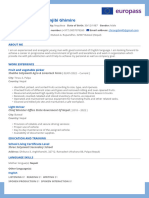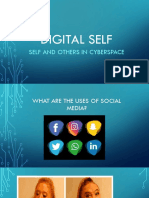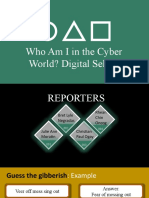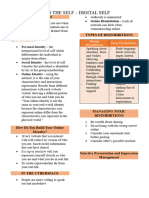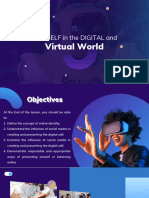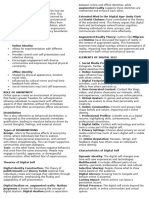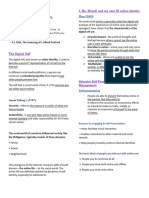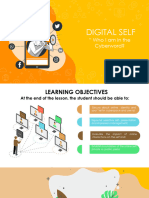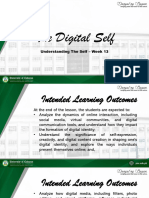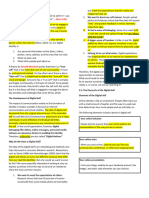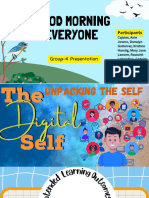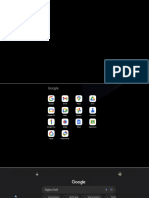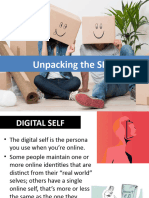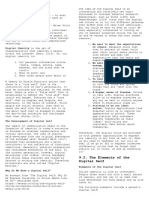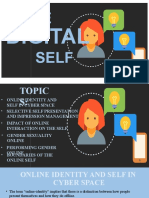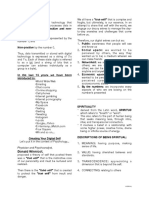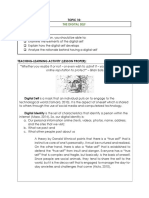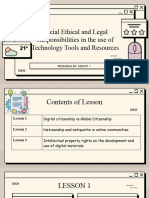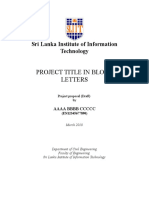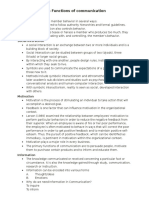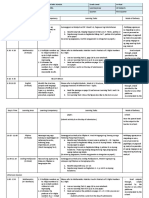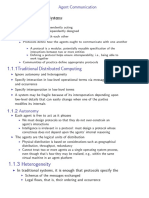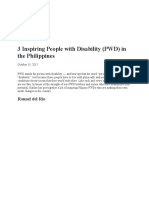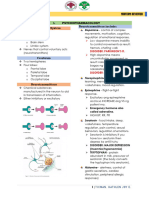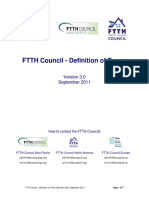0 ratings0% found this document useful (0 votes)
3 viewsUnderstanding the Self 1st year
Understanding the Self 1st year
Uploaded by
Blauta, Reign Jastine Denise Z.Understanding the Self 1st sem
Copyright:
© All Rights Reserved
Available Formats
Download as PDF, TXT or read online from Scribd
Understanding the Self 1st year
Understanding the Self 1st year
Uploaded by
Blauta, Reign Jastine Denise Z.0 ratings0% found this document useful (0 votes)
3 views1 pageUnderstanding the Self 1st sem
Copyright
© © All Rights Reserved
Available Formats
PDF, TXT or read online from Scribd
Share this document
Did you find this document useful?
Is this content inappropriate?
Understanding the Self 1st sem
Copyright:
© All Rights Reserved
Available Formats
Download as PDF, TXT or read online from Scribd
Download as pdf or txt
0 ratings0% found this document useful (0 votes)
3 views1 pageUnderstanding the Self 1st year
Understanding the Self 1st year
Uploaded by
Blauta, Reign Jastine Denise Z.Understanding the Self 1st sem
Copyright:
© All Rights Reserved
Available Formats
Download as PDF, TXT or read online from Scribd
Download as pdf or txt
You are on page 1of 1
Digital Self and Others in Cyberspace
The digital self is a mask we put on to draw in the innovative world. With the digital technologies such as web
pages, online games, virtual worlds, social media, smart phones, Internet, self-extension is extensive.
Self and Others in Cyberspace Two types of Self-Presentation
CYBERSPACE PLEASING THE AUDIENCE
• Refers to the virtual computer world, and more specifically, • This type of self-presentation which try to match the self to
an electronic medium that is used to facilitate online the audience's expectations and preferences.
communication. SELF-CONSTRUCTION
DIGITAL LITERACY • This type of self-presentation tries to match oneself to one's
• An individual's ability to find, evaluate, and communicate own ideal self. The expression of the audience-pleasing
information by utilizing typing or digital media platforms motive varies across situations.
DIGITAL IDENTITY
• A social identity that an internet user establishes in online Multiple Aspects of the Self
communities and websites. It can also be considered an • According to Higgins, the discrepancies between the actual
actively constructed presentation of oneself. self and ideal self-lead to feelings of dejection. Our sense of
ONLINE DISINHIBITION self helps organize our thoughts, feelings, and behaviors.
• The lack of restraint one feels when communicating online • Our overall self-evaluation influences our cognitive processes.
in comparison to communicating in person. For instance, when people with high self-evaluation fail,
o Benign Disinhibition they sustain their self-worth by looking at others' failure.
o Toxic Disinhibition ACTUAL SELF
I, Me and Myself and My User Id Online
• refers to the attributes an individual possesses.
IDEAL SELF
• Objects that one possesses can truly extend the self, as when • refers to the attributes an individual would ideally possess.
an instrument or weapon enables us to get things done of OUGHT SELF
which we would somehow or another be unable. Belonging • refers to the attributes an individual ought to possess.
can likewise emblematically extend self.
• Sartre explained that the reason we want to have something Impact of Online Interaction on Self
is to enlarge our sense of self and that the only way we can
COMPUTER-MEDIATED COMMUNICATION
know who we are is by observing what we have.
• Wherein people use computers and networks to
The Concept of Extended Self
communicate with one another, Involves several exchanges
through various platforms for example text, audio, and/or
DEMATERIALIZATION video messages. It occurs through various types of
• Attachment to and singularization of virtual possessions networking technology and software, such as Email,
Internet Relay Chat (IRC), Instant messaging (IM), Usenet,
RE-EMBODIMENT
Mailing list servers.
• Avatars affect offline self; multiplicity of selves
• Dutton (1996) indicates, that technology can work two ways:
SHARING
open or close social choices. A comparison of how we
• Self-Revelation; Loss of Control. Aggregate possessions; construct our identity in the “real world” versus how we
sense of shared place online. construct it in the online world. Your online identity is not
CO-CONSTRUCTION OF SELF the same as your real-world identity, since the characteristics
• Attachment to virtual possessions in videogames you represent online differ, from the characteristics you
DISTRIBUTED MEMORY represent in the physical world.
• •
– KathleenVenus
Narrative of Self. Digital slutter; digital cues to sense of past
Boundaries of Self Online
Selective Presentation & Impression Management • Personal Boundaries: are the set of guidelines, rules or limits
• Self-presentation is a behavior that attempts to convey some that a person creates to identify reasonable, safe and
information about oneself or some image of oneself to other permissible ways for people to behave towards them ang how
people. they respond in case someone breaks these rules or overstep
• People behave in ways designed to create a favorable the limits.
impression or even to one’s ideals. • Asynchronicity: It allows a person to think more carefully
• People monitor their behavior, observe how others react, about what he/she would like to say before posting which
and adjust their performance to create a desired impression. could help when someone has trouble with face-to-face
interactions.
You might also like
- Europass CVDocument2 pagesEuropass CVchirangibi445No ratings yet
- Digital SelfDocument22 pagesDigital SelfGeorge Agnel100% (4)
- Pimsleur Pack 2015Document3 pagesPimsleur Pack 2015Ventas Premiumsrl50% (2)
- PSY100 Week 13 Unpacking The Self - The Digital Self (20231124095822)Document12 pagesPSY100 Week 13 Unpacking The Self - The Digital Self (20231124095822)katriciapearllipataNo ratings yet
- I, Me, and Myself and My User Id Online: Chapter 11: Digital Self: Self and Others in CyberspaceDocument4 pagesI, Me, and Myself and My User Id Online: Chapter 11: Digital Self: Self and Others in CyberspaceJanderick DeveraNo ratings yet
- Digital Self by Group 1Document17 pagesDigital Self by Group 1clyntonjohn2005No ratings yet
- The Digital SelfDocument14 pagesThe Digital SelfWizpyNo ratings yet
- Digital SelfDocument9 pagesDigital SelfFRANC MELAN TANAY LANDONGNo ratings yet
- Digital SelfDocument7 pagesDigital SelfGRANDY LEE GUANZONNo ratings yet
- Who Am I in The Cyber World. Digital SelfDocument24 pagesWho Am I in The Cyber World. Digital SelfAlessandra ArutaNo ratings yet
- Chapter 11 Report UsDocument28 pagesChapter 11 Report Uscyrusjhon2004No ratings yet
- S7 Unds Chapter 11 Digital Self Self and Others in Cyberspace - 20241123 - 200819 - 0000Document30 pagesS7 Unds Chapter 11 Digital Self Self and Others in Cyberspace - 20241123 - 200819 - 0000apx.shinyunaNo ratings yet
- The Digital SelfDocument16 pagesThe Digital Self2023106826No ratings yet
- Digital SelfDocument2 pagesDigital Selfjojocircus1995No ratings yet
- Digital SELFDocument13 pagesDigital SELFOswaldNo ratings yet
- Digital SelfDocument9 pagesDigital Selfjiliandamian00No ratings yet
- 2.6 Digital SelfDocument29 pages2.6 Digital SelfGONZALES, Harriane Mae V.No ratings yet
- GE 01 - The Digital SelfDocument24 pagesGE 01 - The Digital SelfElla Mae Amparo HonradaNo ratings yet
- Semifinals - UTSDocument2 pagesSemifinals - UTScassandra.delacruz88No ratings yet
- Chapter 10 - Digital SelfDocument30 pagesChapter 10 - Digital SelfHANAH LORAINE LAUREANo ratings yet
- Unds FinalsDocument8 pagesUnds FinalsBam InNo ratings yet
- M9 Digital SelfDocument26 pagesM9 Digital SelfEsther Joy HugoNo ratings yet
- W13 Reviewer The Digital SelfDocument5 pagesW13 Reviewer The Digital SelfKenNo ratings yet
- Digital Self PPTDocument7 pagesDigital Self PPTLorenzo Taguinod Esparas100% (1)
- Lecture 9 Digital SelfDocument19 pagesLecture 9 Digital Self[NTC-Student] Vince Roi FanoyNo ratings yet
- Digital Self LectureDocument2 pagesDigital Self LectureChristan JoseNo ratings yet
- The Digital SelfDocument41 pagesThe Digital Selfronajean gapuzNo ratings yet
- Psy100-Lesson1-Fn-W13 (20231125074118)Document34 pagesPsy100-Lesson1-Fn-W13 (20231125074118)Jared FradejasNo ratings yet
- Week-13-The-Digital-Self (20241115092209)Document34 pagesWeek-13-The-Digital-Self (20241115092209)rica angelesNo ratings yet
- Psych M9 Digital SlefDocument3 pagesPsych M9 Digital SlefMiss MaNo ratings yet
- GE01-The Digital SelfDocument17 pagesGE01-The Digital SelfcristinadoctamaramosNo ratings yet
- Social SelfDocument18 pagesSocial SelfJhulls GdllNo ratings yet
- DigitalDocument1 pageDigitalduhitzstuartNo ratings yet
- UTS-Reporting - 20240407 164909 0000Document27 pagesUTS-Reporting - 20240407 164909 0000Mary jane HamtigNo ratings yet
- Digital SelfDocument8 pagesDigital Selfnicoleann75% (4)
- UTS Digital SelfDocument44 pagesUTS Digital SelfEden Esporlas EspartinezNo ratings yet
- Ge1-Module 11-Digital SelfDocument23 pagesGe1-Module 11-Digital SelfCherry Mae Cabuang100% (1)
- Lesson 3 Digital SelfDocument12 pagesLesson 3 Digital SelfLabida SirenNo ratings yet
- 10 Digital SelfDocument27 pages10 Digital SelfJesslene Roque MojicaNo ratings yet
- Learning Objectives: Understanding The Self Module 1 - The Digital Self: Self and Other in CyberspaceDocument6 pagesLearning Objectives: Understanding The Self Module 1 - The Digital Self: Self and Other in CyberspaceCherry BobierNo ratings yet
- ScSc 11n Lesson 2.6 Summary the Digital SelfDocument4 pagesScSc 11n Lesson 2.6 Summary the Digital Selfjosephcoquia16No ratings yet
- Digital 114219Document18 pagesDigital 114219cresline repollo cuyosNo ratings yet
- The Digital SelfDocument22 pagesThe Digital Selfivan capacia100% (2)
- MODULE 9 THE DIGITAL SELF (Week 9)Document3 pagesMODULE 9 THE DIGITAL SELF (Week 9)ML CreationsNo ratings yet
- 8THE DIGITAL SELF by GROUP 5Document21 pages8THE DIGITAL SELF by GROUP 5Hazel Hedia100% (1)
- Digital SelfDocument57 pagesDigital SelfHera Gab ReodiqueNo ratings yet
- Ust Exam ReviewerDocument2 pagesUst Exam ReviewerAquino Leah AnnNo ratings yet
- UTS Digital SelfDocument44 pagesUTS Digital SelfEden Esporlas EspartinezNo ratings yet
- The Digital SelfDocument7 pagesThe Digital SelfANNE MARIE SANCHEZNo ratings yet
- Donald Winnicot,: SpiritusDocument2 pagesDonald Winnicot,: SpiritusAlyasher MacabantogNo ratings yet
- Microsoft Word - PSYCH100-8Document5 pagesMicrosoft Word - PSYCH100-8Ink BalgNo ratings yet
- Digital Self (20231210190551)Document48 pagesDigital Self (20231210190551)arsonNo ratings yet
- TechnologyDocument66 pagesTechnologyJUDY ANN DE GUZMANNo ratings yet
- Uts Semi 2Document2 pagesUts Semi 2Trisha ApalisNo ratings yet
- UTS The Digital SelfDocument30 pagesUTS The Digital SelfJoshua Dome G. BustamanteNo ratings yet
- Lesson 17Document22 pagesLesson 17JimMarkGasparCabanisasNo ratings yet
- The Digital SelfDocument15 pagesThe Digital SelfmarkryanfortunoNo ratings yet
- DanicaDocument17 pagesDanicaDanica MendozaNo ratings yet
- Activity: MYTH BUSTER: Module 1 - Digital Self - Page 1 of 6Document6 pagesActivity: MYTH BUSTER: Module 1 - Digital Self - Page 1 of 6Miss MegzzNo ratings yet
- Digital SelfDocument15 pagesDigital SelfZagreusNo ratings yet
- W12-Module 1 The Digital SelfDocument4 pagesW12-Module 1 The Digital SelfZoi SacoponNo ratings yet
- Social Media Networking for Introverts: Build Meaningful Connections and Achieve Marketing Success Without BurnoutFrom EverandSocial Media Networking for Introverts: Build Meaningful Connections and Achieve Marketing Success Without BurnoutNo ratings yet
- Modern Language AptitudeDocument11 pagesModern Language AptitudepirhotmuntheNo ratings yet
- Project Title in Block Letters: Sri Lanka Institute of Information TechnologyDocument3 pagesProject Title in Block Letters: Sri Lanka Institute of Information TechnologyIsuru GuruwitaNo ratings yet
- WAITES. Psychological Dynamics in International Arbitration AdvocacyDocument52 pagesWAITES. Psychological Dynamics in International Arbitration AdvocacyAlejandro ValenciaNo ratings yet
- American Literature: Presented By: Virrus M. Tocal 11-ABMDocument24 pagesAmerican Literature: Presented By: Virrus M. Tocal 11-ABMZup ThanksNo ratings yet
- The Hierarchical Structure of WordsDocument9 pagesThe Hierarchical Structure of WordsnooraNo ratings yet
- AEXT292Document110 pagesAEXT292The Dheeraj Rock GuptaNo ratings yet
- Functions of CommunicationDocument4 pagesFunctions of CommunicationStephanie Torcatos50% (2)
- Class Material 1 & 2Document8 pagesClass Material 1 & 2FARISHA ZULKEFLINo ratings yet
- Activity: Identify A Problem Worth Solving - IDocument6 pagesActivity: Identify A Problem Worth Solving - IRalp GumilingNo ratings yet
- Characteristics of Modern EducationDocument2 pagesCharacteristics of Modern EducationAyesha ShafiqNo ratings yet
- WHLP Q1 Week 4 Grade 4Document3 pagesWHLP Q1 Week 4 Grade 4Ronel Arlantico MoraNo ratings yet
- Information, Education & Communication (IEC)Document4 pagesInformation, Education & Communication (IEC)avinash dhameriyaNo ratings yet
- Q.No.1) Do You Consume Cold Drinks ? A) Yes B) No Table No. - 1 Particulars No. of Respondents Percentage Yes 100 100% No 0 0%Document19 pagesQ.No.1) Do You Consume Cold Drinks ? A) Yes B) No Table No. - 1 Particulars No. of Respondents Percentage Yes 100 100% No 0 0%KomalNo ratings yet
- Agent Communication PDFDocument15 pagesAgent Communication PDFMohamed MagdhoomNo ratings yet
- Advice: 3 Inspiring People With Disability (PWD) in The PhilippinesDocument10 pagesAdvice: 3 Inspiring People With Disability (PWD) in The Philippinestan2masNo ratings yet
- ENG3U SpeechDocument5 pagesENG3U SpeechSteve M HallNo ratings yet
- Doe Implementing U.S. Department of Energy Lessons Learned Programs Doe-Hdbk-7502-95Document66 pagesDoe Implementing U.S. Department of Energy Lessons Learned Programs Doe-Hdbk-7502-95TiterNo ratings yet
- Periodical Test in TleDocument3 pagesPeriodical Test in TleChelby Mojica100% (2)
- Department of Education Region XDocument2 pagesDepartment of Education Region XGenevieve ArellanoNo ratings yet
- Midterm Reviewer PsychiatricDocument20 pagesMidterm Reviewer PsychiatricJameela Ann SorioNo ratings yet
- FRANCZAK CirculationKnowledgePublic 2016Document15 pagesFRANCZAK CirculationKnowledgePublic 2016Piyush SoodNo ratings yet
- Boroditsky - Sex, Syntax and SemanticsDocument6 pagesBoroditsky - Sex, Syntax and SemanticsFrank Carrizo ZiritNo ratings yet
- EDUC 6243 TECHNOLOGY FOR TEACHING&LEARNING PRELIM To FINAL BY JEZZADocument9 pagesEDUC 6243 TECHNOLOGY FOR TEACHING&LEARNING PRELIM To FINAL BY JEZZAMichalcova Realisan JezzaNo ratings yet
- MIL Lesson 1Document10 pagesMIL Lesson 1TeachSir Ree MinYuNo ratings yet
- Mcm431 Development Communication Solved Mcqs - Mcm431 Final Term Papers Solved Mcqs - Mcm431 Mid Term Papers Solved McqsDocument29 pagesMcm431 Development Communication Solved Mcqs - Mcm431 Final Term Papers Solved Mcqs - Mcm431 Mid Term Papers Solved McqsMuhammad AnasNo ratings yet
- 4 FTTH Council - Definition of Terms - Revision 2011 - GamalDocument7 pages4 FTTH Council - Definition of Terms - Revision 2011 - GamalOruss LeonNo ratings yet
- Broadband Forum MPLST-TP TutorialDocument82 pagesBroadband Forum MPLST-TP TutorialFred Madison100% (1)
- Pfizer MLSDocument2 pagesPfizer MLSbrazil213No ratings yet
